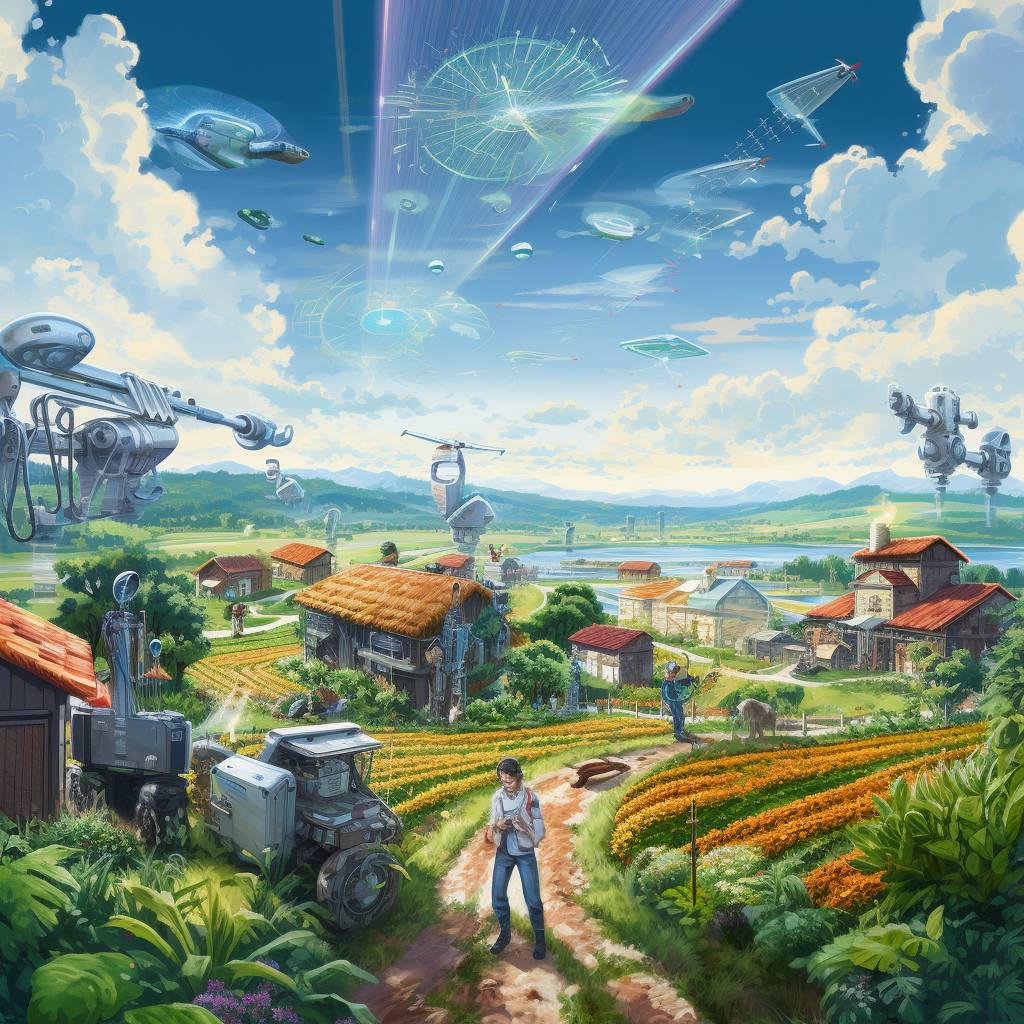Unveiling the Future of Agriculture: The Fusion of Robotics, Mechatronics, and Internet of Things
The agricultural industry stands on the brink of a technological revolution, driven by the integration of robotics, mechatronics, and the Internet of Things (IoT). This technological trifecta promises to redefine farming practices, enhancing efficiency, sustainability, and profitability.
Robotics, the science and engineering of creating and operating automated machines, is already making significant strides in the world of agriculture. Robots are now employed to automate a variety of farming tasks such as sowing, reaping, and sorting. This not only minimizes manual labor but also boosts productivity. For instance, robotic harvesters operate tirelessly, picking fruits and vegetables at their peak ripeness. This not only minimizes waste but also ensures that the produce is of the highest quality.
Mechatronics, an interdisciplinary field that merges mechanical engineering, electronics, computer engineering, telecommunications engineering, systems engineering, and control engineering, is another key player in the modernization of farming practices. The application of mechatronics in agriculture has led to the creation of intelligent farming tools capable of executing intricate tasks with remarkable precision and efficiency. For instance, mechatronic systems are being utilized to develop smart irrigation systems that can monitor soil moisture levels and automatically adjust watering schedules to optimize crop growth and water conservation.
The third pillar of this technological revolution is the Internet of Things. IoT refers to a network of physical devices fitted with sensors and software that can connect and exchange data with other devices and systems over the internet. IoT equips farmers with real-time data about their crops, livestock, and machinery, thus enabling them to make informed decisions and swiftly respond to changing conditions. For example, IoT devices can alert farmers about pests or diseases affecting their crops, thereby allowing them to take preventive measures before the issue escalates.
The amalgamation of robotics, mechatronics, and IoT is giving rise to a new era in agriculture known as precision farming or smart farming. This approach focuses on utilizing technology to monitor and manage agricultural operations at a granular level with the aim of maximizing yields and minimizing waste. Precision farming is not only efficient and productive but also sustainable as it reduces the dependency on chemical inputs and promotes resource conservation.
However, integrating these advanced technologies into agriculture is not without its challenges. Farmers often grapple with high initial costs, a lack of technical skills, and data security concerns. Additionally, there are ethical and social implications such as potential job losses and impacts on rural communities that need to be addressed.
Despite these hurdles, the potential advantages offered by the fusion of robotics, mechatronics, and IoT in agriculture are too substantial to be overlooked. As these technologies continue to progress and become more accessible, they are set to reshape the agricultural sector in ways we are yet to fully comprehend.
In summary, the future of agriculture is firmly rooted in the convergence of robotics, mechatronics, and the Internet of Things. By leveraging these technologies, farmers can enhance productivity, promote sustainability, and boost profitability. While there are obstacles to navigate, the potential benefits are colossal, marking an exhilarating era for the agricultural industry.
